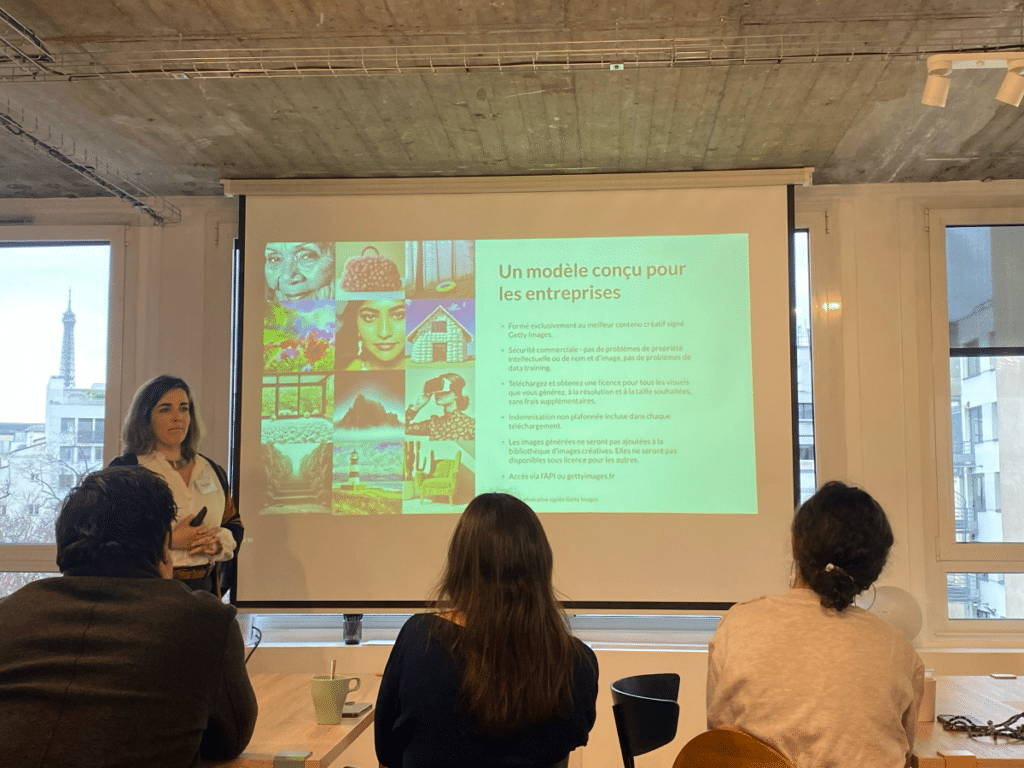Working with AI: insights from IHALC Paris

How are in-house teams beginning to use AI, and what are the opportunities and challenges they are finding? On 5 March, IHALC held our first event in Paris . In partnership with Getty Images, we hosted a wide-ranging discussion with major brands from entertainment, retail, FMCG and beauty (shown above, l to r, IHALC’s Patrick Burgoyne and Stephen Attree).
Here are some of the key insights from the day:
Most are still ‘dipping their toes’; into AI. Usually this is a result of teams being proactive and interested themselves in exploring its potential rather than being directed to adopt AI by the business or a leader in the department. There was a sense of being very much at the beginning of a process where the field is open. However, one major car brand reported that they have already fully integrated AI into their work on the Brand Design team, putting them very much ahead of the majority.
One brand team reported that they were highly restricted in their use of AI. This is because the company is in the entertainment space and works with a lot of IP and copyright holders. Management was sensitive to embracing AI given recent SAG strikes in America and the attitudes of creators in the TV and film space to the technology and possible threats to their livelihoods. This means that the in-house creative team is banned from using AI on any live campaign work and there are strict limits on its use elsewhere, with complex compliance, review and approvals processes in place. This negates any advantages using AI may have in terms of speed.
Another team, from a children’s clothing brand, stressed the need for authenticity in imagery to align with their brand values. It’s important, for example, for them to show flaws in children’s complexions and not portray impossible perfection. They also raised the point that they cannot use images of children under 3 months old due to French regulations. AI might provide a way around that when it comes to advertising ranges for very young children.

One of the group discussions at our IHALC Paris event
In terms of the need to be transparent about the use of AI with consumers, some likened it to the introduction of photo-realistic 3D: they did not feel the need then to declare that images of products, furniture etc were created using 3D software and so wondered if there was any real need to do the same when it comes to AI. There was a perception that doing so might create a problem where none needed to exist.
There was agreement on the desire to be able to train AI tools on a brand’s own content ie to be able to upload assets into a ‘walled garden’ GenAI system to create brand-aligned imagery. And attendees were embracing the use of AI-driven tools to speed up mundane photo-retouching tasks.
Overall there was a degree of skepticism around the potential of GenAI to live up to the hype when it comes to creating either images or copy that truly align with a brand’s values, aesthetic and tone of voice. And a sense that GenAI-illustrated images are already developing a distinctive style which people will quickly tire of.

Getty Images’ Nadege Chataigner presenting their consumer research on attitudes to the use of AI
Although as yet there is little expectation from businesses that AI will lead to cost savings (in fact, most report that their business sees it as an opportunity to improve the creative product) all agreed that its introduction will result in changes to team structure and roles. In particular, the role of prompt engineer will become highly important and those skills highly sought-after. Prompt Engineers who can use AI tools to arrive at desired images quickly and efficiently will be highly-prized. Most expected their teams to undertake training in this area.
Sustainability is a major concern for some brands, particularly those who have made commitments eg toward achieving net zero. There was a feeling that the carbon footprint of AI and its heavy use of energy and water is little understood or appreciated as yet. One attendee reported that his brand’s sustainability officer had warned that the adoption of AI would seriously disrupt their ability to deliver on their carbon reduction targets. This is an area that needs better understanding and clarity eg how much carbon does each prompt generate and how can we monitor our use?
Details of upcoming IHALC events, which are free to members, can be found here
